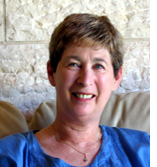By Dorothea Shefer-Vanson
 MEVASSERET ZION, Israel –As readers of this column will have surmised by now, my husband and I are keen concert-goers. Israel abounds in opportunities to attend inspiring orchestral concerts, uplifting chamber performances, and impressive solo recitals. We try to attend as many of these as our energy and pocket allow, and these almost invariably leave us agape at the wealth of musical riches with which this small country is blessed.
MEVASSERET ZION, Israel –As readers of this column will have surmised by now, my husband and I are keen concert-goers. Israel abounds in opportunities to attend inspiring orchestral concerts, uplifting chamber performances, and impressive solo recitals. We try to attend as many of these as our energy and pocket allow, and these almost invariably leave us agape at the wealth of musical riches with which this small country is blessed.
Thus, in the summer we attended a gala concert given in the open air in Tel Aviv, at which Daniel Barenboim conducted the orchestra, choir and soloists of Milan’s La Scala in a stunning performance of Verdi’s Requiem. It was attended by thousands, and was well worth enduring the heat and discomfort of Tel Aviv.
A few weeks earlier we attended a weekend devoted to Beethoven in a hotel in Nazareth. The hotel, which afforded a magnificent vista over the Jezreel Valley, was comfortable and could easily accommodate the four hundred or so Beethoven aficionados who had come to be regaled with lectures about the composer and recitals of his work. The organizer and star of the weekend was Gil Shohat, a strapping young man of thirty-five who, as well as playing four of the most difficult Beethoven piano sonatas by heart that weekend (Pathetique, Moonlight, Waldstein and Apassionata), spoke about and demonstrated various aspects of the composer’s genius. Gil also composes and conducts on a comprehensive scale, and was recently made a Companion of France’s Legion d’Honneur, a signal recognition for any Israeli, and especially one so young. Now we are eagerly awaiting the next such weekend.
Not long after returning from Nazareth we caught a Saturday lunchtime concert in the Scottish Church, a fine building of Jerusalem stone dating from 1927 and overlooking the Old City of Jerusalem and the Valley of Hinnom. At the entrance to the church is a plaque commemorating ‘the Liberation of Jerusalem on December 9 1917’ which was laid by ‘Field Marshal the Viscount Allenby G.C.B., G.C.M.G. on May 7 1927.’ Inside the cool interior of the church, which is built in modern Romanesque style, plaques commemorate fallen soldiers of Scottish brigades who fell in both world wars. The text on one of them reads: ‘Sacred to the memory of Alistair, Captain, the Black Watch, who fell in the defence of Crete on May 28th 1941, aged 27, only son of Brigadier-General J.G.H.Hamilton of Skene, and of Mungo, Captain, the Black Watch, M.C., who died on December 14th 1941 of wounds received at Tobruk, aged 26, only surviving son of Col. Sir George Stirling, Bt., of Glorat. They worshipped together in this church, November 1937 – June 1940.’ One can only imagine how much grief and heartache is embodied in this inscription.
But that is not all the history that this church embodies. As you leave the building and look out over the walls of the Old City, another small plaque catches your eye. This one, headed ‘A Fragment of History,’ mentions the two tiny silver scrolls from the 7th century BCE discovered by archaeologists a few years ago in the valley below and usually on display in the Israel Museum. The ancient scrolls contain the priestly blessing, the form of words which Moses instructed Aaron and his sons, the priests of Israel, to use when blessing the people. The plaque quotes the text, which anyone who attends the Shabbat service in synagogue hears pronounced by the Kohanim, and obligingly adds its English translation as it appears in the Authorized Version of the Bible.
It’s impossible to take a single step in Jerusalem without encountering one aspect or another of our history.
*
Shefer-Vanson, a freelance writer and translator based in Mevasseret Zion, can be reached at dorothea@shefer.com This article initially appeared in the AJR Journal, published by the Association of Jewish Refugees in the United Kingdom.